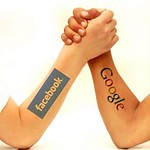 Next to your website home page, your landing page is the most important part of the entire online business marketing process. As the name implies, your landing page is where users, well, land from an external website. Whatever you have to offer, the user will see it on the landing page and from there make the decision to explore your site further and maybe become one of your customers.
Next to your website home page, your landing page is the most important part of the entire online business marketing process. As the name implies, your landing page is where users, well, land from an external website. Whatever you have to offer, the user will see it on the landing page and from there make the decision to explore your site further and maybe become one of your customers.
The question is, is your landing page well-written, nicely-designed and purposeful enough to attract customers and help you get closer to your conversion goals? If you’re not too sure, here are some essential tips for creating your landing pages that hopefully will help you become an effective online marketer.

 Every page on your website is important, but nothing tops the importance of your website home page. If your site were an actual brick-and-mortar shop, the website home page would be its reception area. It is where customers first gather, and what they see there will become a huge factor in their decision to stay on the site, or leave it.
Every page on your website is important, but nothing tops the importance of your website home page. If your site were an actual brick-and-mortar shop, the website home page would be its reception area. It is where customers first gather, and what they see there will become a huge factor in their decision to stay on the site, or leave it. Good for you if you have engaged the services of a great marketing team which counts excellent copywriters among its members. If you don’t have writers working for you, you can actually still do the copywriting yourself.
Good for you if you have engaged the services of a great marketing team which counts excellent copywriters among its members. If you don’t have writers working for you, you can actually still do the copywriting yourself. Your written words are great, but visuals are even greater especially for social media marketing. That is what essentially an article written by Sydny Layne for 435 Digital is trying to say.
Your written words are great, but visuals are even greater especially for social media marketing. That is what essentially an article written by Sydny Layne for 435 Digital is trying to say. In a move that could be construed as part of its campaign against spam, Twitter no longer allows links in direct messages to other users.
In a move that could be construed as part of its campaign against spam, Twitter no longer allows links in direct messages to other users. For as long as I can remember, keywords and keyword ranking have always been at the centre of any searches we make on Google and other search engines. They have been the backbone of any effective SEO strategy for a long time, and still is for a majority of people who aim to get better rankings for their websites.
For as long as I can remember, keywords and keyword ranking have always been at the centre of any searches we make on Google and other search engines. They have been the backbone of any effective SEO strategy for a long time, and still is for a majority of people who aim to get better rankings for their websites. A lot of online marketers tend to overlook just how important it is to make emails more clickable. One of the best inbound marketing strategies out there is sending emails to people who actually chose to get such message from you. Still, for one reason or another, some of those emails still get lost in the inbox litter of the person you’re sending it to.
A lot of online marketers tend to overlook just how important it is to make emails more clickable. One of the best inbound marketing strategies out there is sending emails to people who actually chose to get such message from you. Still, for one reason or another, some of those emails still get lost in the inbox litter of the person you’re sending it to. It’s true that Facebook and Google Plus are both social networking websites, the largest and the second-largest in the world today, respectively. The comparison, however, has to end there. Google Plus, as anyone who uses most social media services as part of an overall marketing strategy would know, is more than just a simple social networking website.
It’s true that Facebook and Google Plus are both social networking websites, the largest and the second-largest in the world today, respectively. The comparison, however, has to end there. Google Plus, as anyone who uses most social media services as part of an overall marketing strategy would know, is more than just a simple social networking website. We live in a world where mobile devices are just about everywhere and with it comes the rise in mobile device users. Wherever you look, there would always be some person surfing the Internet using his smartphone or a kid playing games on a tablet. With the number of mobile device users growing with each passing day, it is only expected that they would soon dominate e-commerce, as an infographic on SocialMediaToday indicates.
We live in a world where mobile devices are just about everywhere and with it comes the rise in mobile device users. Wherever you look, there would always be some person surfing the Internet using his smartphone or a kid playing games on a tablet. With the number of mobile device users growing with each passing day, it is only expected that they would soon dominate e-commerce, as an infographic on SocialMediaToday indicates.